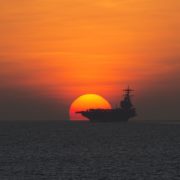The Philippines will be one of the nations in the Indo-Pacific region to receive the biggest share in security assistance, a U.S. State Department official said this week.
The amount of assistance given was determined given the long-standing relationship between the United States and the Philippines.
“We have close to $300 million in security assistance. The country that receives the largest chunk, as far as I understand, is the Philippines,” U.S. Deputy Assistant Secretary of State Walter Douglas said on Wednesday, August 29.
Of the $300 million, 20 percent of that will be given to the Philippines.
“So we’re looking at about $60 million of that $300 million to come to the Philippines,” Douglas added.
The deputy assistant explained that the U.S. chose the Philippines as the one that deserved the most amount due to the length of time the two nations have worked together on security matters.
“It’s really a recognition of the long-term partnership we’ve had with the Philippines on the security front, in addition to the other things, so therefore we see it as a priority to help the Philippines,” Douglas stated.
Douglas also suggested the areas to which the donated funding should be appropriately allocated, as reported by Rappler.
“And that will cover all sorts of areas — peacekeeping, maritime domain awareness, all sorts of areas that we think we’re working very well with the Philippines,” he added.
Under U.S. President Donald Trump’s administration, the assistance works under the Free and Open Indo-Pacific Strategy, which is to create more transparency in the region.
“The idea is to create a situation here based on openness, based on transparency, based on well-defined rules, so that private sector money will move out of those [money centers] and more will come into this region,” Douglas said.
He explained that while the program also involves South Asia, particularly India, there are other areas included. The strategy ensures that the region it covers is free from coercion and maintains open seas and airways.
“I’d also like to note that it’s called Indo-Pacific. And why Indo? First of all, it’s not just India-Pacific. It’s Indo-Pacific. And while India is certainly the biggest economy over there, it really includes Bangladesh, Nepal, Maldives, Sri Lanka in that region,” Douglas said.
The Association of Southeast Asian Nations (ASEAN) is also a key factor in the said strategy.
Trump first introduced the concept at a regional summit in Danang, Vietnam in November last year.
“The fact that the president announced the Indo-Pacific in Danang is not a coincidence. It’s a recognition that ASEAN is where all these different geographic areas and these economies meet,” Douglas said.
He also emphasized the essence of the international arbitration in deciding what is best for two nations with conflicts.
“International law is the basis of so much of what we do, so I think it’s what the countries that are party to that should live up to, and then obviously others in the region should follow that too. There has been a legal ruling,” Douglas stated. (AJPress)







